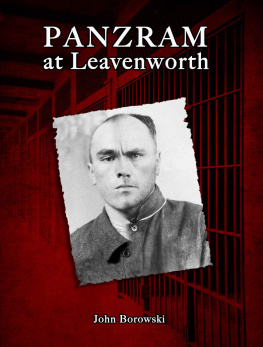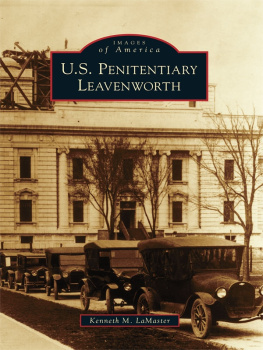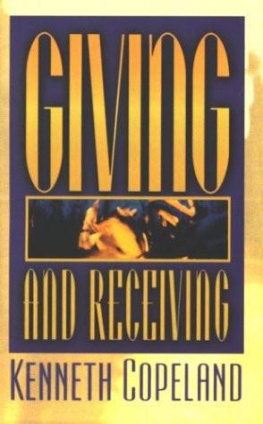Kenneth M. LaMaster - Leavenworth Seven
Here you can read online Kenneth M. LaMaster - Leavenworth Seven full text of the book (entire story) in english for free. Download pdf and epub, get meaning, cover and reviews about this ebook. genre: Home and family. Description of the work, (preface) as well as reviews are available. Best literature library LitArk.com created for fans of good reading and offers a wide selection of genres:
Romance novel
Science fiction
Adventure
Detective
Science
History
Home and family
Prose
Art
Politics
Computer
Non-fiction
Religion
Business
Children
Humor
Choose a favorite category and find really read worthwhile books. Enjoy immersion in the world of imagination, feel the emotions of the characters or learn something new for yourself, make an fascinating discovery.

- Book:Leavenworth Seven
- Author:
- Genre:
- Rating:3 / 5
- Favourites:Add to favourites
- Your mark:
- 60
- 1
- 2
- 3
- 4
- 5
Leavenworth Seven: summary, description and annotation
We offer to read an annotation, description, summary or preface (depends on what the author of the book "Leavenworth Seven" wrote himself). If you haven't found the necessary information about the book — write in the comments, we will try to find it.
Leavenworth Seven — read online for free the complete book (whole text) full work
Below is the text of the book, divided by pages. System saving the place of the last page read, allows you to conveniently read the book "Leavenworth Seven" online for free, without having to search again every time where you left off. Put a bookmark, and you can go to the page where you finished reading at any time.
Font size:
Interval:
Bookmark:



Published by The History Press
Charleston, SC
www.historypress.com
Copyright 2019 by Kenneth M. LaMaster
All rights reserved
Front cover, top (left to right): George Curtis, Tom Underwood, Stanley Brown. Courtesy of the author ; bottom : Front elevation, USP Leavenworth. Courtesy of the author .
First published 2019
E-Book edition 2019
ISBN 978.1.43966.618.0
Library of Congress Control Number: 2018960975
Print edition ISBN 978.1.46714.040.9
Notice : The information in this book is true and complete to the best of our knowledge. It is offered without guarantee on the part of the author or The History Press. The author and The History Press disclaim all liability in connection with the use of this book.
All rights reserved. No part of this book may be reproduced or transmitted in any form whatsoever without prior written permission from the publisher except in the case of brief quotations embodied in critical articles and reviews.
Dedicated to the memories of Kenneth M. LaMaster Sr. and Charles F. Edler
My career began at the United States Penitentiary in Leavenworth, Kansas, on July 24, 1983. Just as with everyone else who had gone before me, my first days were filled with countless pages of forms ranging from insurance to emergency locator information, taking the usual physical and then being issued my first official Federal Bureau of Prisons I.D. card. That day, we were introduced to the person who was to guide us through institution familiarization training. For the next few weeks, Bobby Lawrence showed us the ways of being the best correctional officers we could be. His was the daunting task of teaching us the policies and procedures that would help us succeed. Along the way, Bobby gave us a brief overview of the institutions history.
It was during this overview that I first learned of the December 11, 1931 escape that I am presenting here. As the story goes, countless bureau policies have been instituted as a result of that escape. First and foremost, if anyone from the warden on down is taken hostage and brought to the gate and the inmates demand to be released, it is to be understood that the gates will not be opened and that those persons being held hostage have no power or authority whatsoever to give orders. If at that point the hostage-takers were to threaten to kill the hostages, we were instructed to refuse to open any gate and walk away from the control panel that opens the doors to freedom. Simply walking away would eliminate the possibility of a persons sympathies for the hostages leading to the release of the inmates. It also insured that the officer in control of the gate could not be a witness if the inmates carried out the threat and killed a hostage.
From the moment the discussion began about the 1931 escape, I became intrigued. Many questions began swirling through my head. Every opportunity I had afterward, I would track down newspaper accounts, magazine articles and any old-time Leavenworth staff members who could relate any information about the escape. For the remainder of my career, which spanned twenty-seven years, I spent countless and sometimes exhaustive hours reading and searching for anything that could tell me the story of that day. Along the way, I have amassed a collection of photographs, articles, inmate files, artifacts and even 2,500 pages of FBI reports that opened the door to the entire story. I have made countless acquaintances from the National Archives and historical societies in Illinois, Oklahoma, Kansas and California. At times, it has appeared that I have been guided in the direction I needed to go when I ran into a brick wall. One such occurrence came when I was talking to my father-in-law about how it would be great if I could find photographs to include with the telling of this story. The next morning, I was on the computer searching eBay for Leavenworth memorabilia when I came across several auctions that included Hearst news agency pictures covering the escape about which I am writing. Those are contained within this book.
Anyone who has worked in a correctional facility can tell you that the threat of an escape is constant. Many times over the course of a career, more escapes are broken up than actually occur. Many times, its a snitch who brings the plot to the staff s attention. Officers have stumbled upon hidden contraband that was to be used in an attempt, and many times this discovery leads right to the cell doors of the escapees. Less often does an escape occur during which inmates take hostages with the idea of forcing their way to freedom. But during the 1920s and 1930s, a lawlessness prevailed, and desperate men resorted to desperate measures.
On May 30, 1933, a few miles south of the Leavenworth Federal Prison, inmates at the Kansas State Penitentiary are enjoying a Memorial Day watching a baseball game on the yard. Warden Kirk Prather suddenly realizes that he has been surrounded by some of the prisons more notorious criminals. As Prather began to move, he was confronted by six inmates armed with semiautomatic pistols. Eleven inmates, including Harvey J. Bailey and Wilbur the Tri-State Terror Underhill, manage to take Prather and fourteen officers hostage. As they make their way toward the southeast corner of the institution, the warden is issued an ultimatum: order the tower officer to throw down the keys to the towers entry door or the inmates would open fire, killing the hostages. As the entrance to the tower opened, the inmates forced Prather and two officers up the stairs. Once they reached the observation deck of the tower, one inmate produces a rope, and the eleven inmates, the warden and two officers (taken as hostages) lower themselves to the ground and make their way into two waiting getaway cars.
On September 26, 1933, associates of John Dillingernamely Harry Pete Pierpont, Charles Mackey and John Red Hamilton, along with eight othersbegan luring staff into a trap in the basement of the prison shirt factory at the Indiana State Penitentiary at Michigan City. Using pistols that had been smuggled into the prison by the recently paroled Dillinger, the eleven desperate men made their way across the prison compound and through three gates to freedom. Along the way, they took numerous hostages. Deputy Superintendent Albert Evans and Officer Fred Willintz were severely beaten, and seventy-two-year-old Finley Carson was shot twice for moving too slow. Unlike in the movie Public Enemies , once the last door was open, it was virtually every man for himself. Dillinger had been arrested four days earlier and was being held in the Lima (Ohio) County Jail on a charge of bank robbery.
On January 13, 1934, Floyd Hamilton and Jimmy Mullens made their way through the barbed wire fence along the outer edges of the Texas State Prison Farm in Eastham.
Each of these escapes, though different, show how desperate men can be and how fast a routine day at a prison can erode into chaos within seconds. They also bear a striking similarity to the story you are about to read. The events of December 11, 1931, are eerily similar and were covered in virtually every news medium of that era. All of these escapes involved weapons smuggled into the prison, hostages and violence.
I write this story not only as an article of historical significance regarding what truly happened on that day long ago, I also write it to pay tribute to those who endured the experiences of being a hostage or a witness to the violence and to those who suffered injury and to the federal prison officers, county sheriffs and military and civilian posse members who relentlessly, without regard for personal safety, came together while facing terrific peril.
Font size:
Interval:
Bookmark:
Similar books «Leavenworth Seven»
Look at similar books to Leavenworth Seven. We have selected literature similar in name and meaning in the hope of providing readers with more options to find new, interesting, not yet read works.
Discussion, reviews of the book Leavenworth Seven and just readers' own opinions. Leave your comments, write what you think about the work, its meaning or the main characters. Specify what exactly you liked and what you didn't like, and why you think so.












